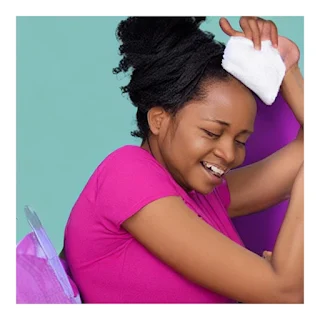Hygiene Practices During Menstruation
The history of women's hygiene is a long and varied one, with evidence of the use of various products and practices to manage menstruation dating back thousands of years. In ancient civilizations, women used materials like rags, grass, and wool to absorb menstrual flow. Some cultures also practiced isolation during menstruation due to beliefs about menstrual blood being impure.
In modern times, the development of disposable pads and tampons revolutionized women's hygiene. Commercial pads made from cellulose were introduced in the late 1800s, while tampons became popular in the early 1900s as an alternative to pads. Today, there is greater awareness about menstrual hygiene and a shift from the stigma that has historically surrounded menstruation.
The Importance of Women's Hygiene
Maintaining good hygiene during menstruation is crucial for health reasons. Proper hygiene practices can help prevent infections, such as bacterial vaginosis, and other health issues. Regularly changing pads or tampons prevents the buildup of bacteria, minimizing the risk of infection.
Good menstrual hygiene also promotes personal comfort and confidence. Using absorbent, leak-resistant products helps women feel clean and comfortable during their periods, especially for those who are active or engage in physical activities.
Products and Practices for Maintaining Women's Hygiene
There are various products available for maintaining hygiene during menstruation, including:
- Pads: Absorbent strips worn in the underwear to absorb menstrual flow, available in different sizes and absorbencies.
- Tampons: Inserted into the vagina to absorb flow, available in different sizes and absorbencies, requiring frequent changing to prevent toxic shock syndrome.
- Panty Liners: Smaller, thinner pads used for light flow or as backup protection.
- Menstrual Cups: Reusable silicone or rubber cups inserted into the vagina to collect flow, offering eco-friendly and cost-effective protection.
When selecting menstrual hygiene products, factors like absorbency, comfort, and cost should be considered. Following product instructions and replacing products as needed ensures optimal hygiene and comfort.
Special Considerations for Women's Hygiene
Some women may have special hygiene considerations. For those with sensitive skin or allergies, hypoallergenic and fragrance-free products are recommended. Pregnant or breastfeeding women may experience changes in flow, requiring different absorbency levels or product types. Consulting with healthcare providers is important to address any specific needs.
Conclusion
Good menstrual hygiene is essential for women's health and well-being. By choosing appropriate products and maintaining proper hygiene practices, women can stay comfortable and healthy during menstruation. Women with special needs, such as allergies or pregnancy, should consult with healthcare providers to select the best products for their circumstances.


No comments:
Post a Comment